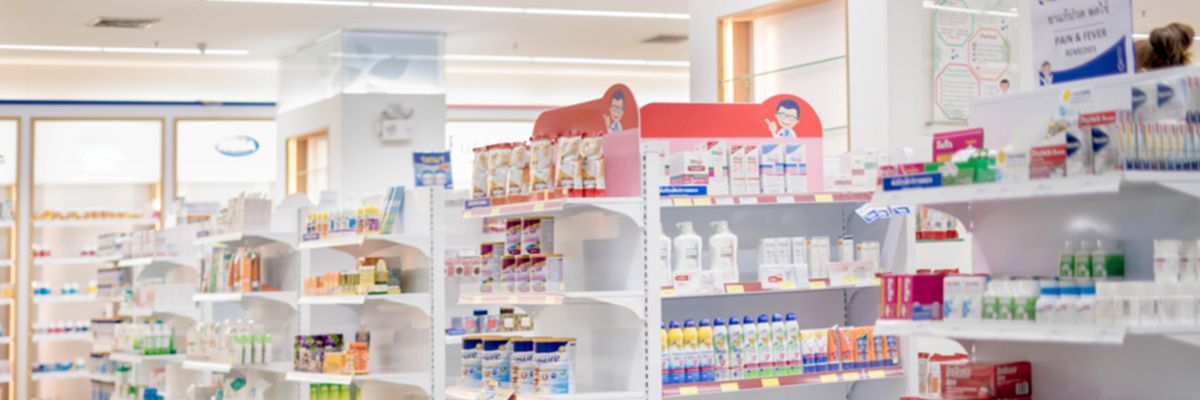
HVAC optimization for retail pharma
HVAC optimization in retail pharma is critical for one simple reason above many others. The wrong (particularly if they’re extreme) temperatures can damage both prescription and over-the-counter drugs with potentially harmful or severe consequences. So, in retail pharma, HVAC optimization is about more than just energy savings and customer comfort.
What’s the story, then? Generally, no drug should be exposed to temperatures higher than 86 degrees. Most pharma companies recommend that their products be stored at room temperatures of 68 to 77 degrees Fahrenheit to maintain product integrity. Failure to optimize HVAC and maintain these levels may result in product loss due to incorrect storage. Others, however, require chilling and must be stored at low temperature ranges.
In addition to protecting pharmaceutical products in a retail environment there are several other more familiar reasons for optimizing HVAC. These apply to pharmacies as they do to other outlets. To remind ourselves, they include:
- Giving the customer a comfortable experience
- Protecting, where necessary, other consumers (non-pharmaceutical) products
- Optimal financial management of the business, avoiding unnecessary costs.
But for now, let’s focus on pharma itself.
Key considerations Pharmaceutical HVAC
We can identify three key considerations HVAC in retail pharma needs to address that are worth examining in more detail, as follows:
Temperature
Rigorous control of temperature is vital in pharma because the wrong temperatures can stimulate the growth of microbes and increase water activity (which is the basis of microbial growth). This adversely affects the end product. Thus, HVAC systems must affirm – with certainty – suitable temperatures for safe product storage. There isn’t any room for error.
The importance of HVAC optimization here is evident because HVAC controls temperature by continuously monitoring the environment. When the temperature is too high, the HVAC supplies cool air to reduce it. The optimized HVAC also corrects the problem when the opposite is the case. Generally, this optimization is achieved by one of two mechanisms:
- On/off – in this case, total power is applied until the temperature reaches the required level, at which point power is cut off. When it drops beneath the threshold level again, the cycle repeats.
- PID control – in simple terms, a closed-loop method is used where a feedback signal is monitored, and HVAC output adjusted as required to maintain the optimal temperature.
Humidity
As with temperatures, humidity also stimulates microbe growth and increases the risk of product contamination. HVAC must maintain the correct humidity levels for pharmaceutical products (and simultaneously consider human comfort levels for employees and customers).
Air quality
In pharma, the HVAC must often regulate airflow inside certain designated areas where products are stored to assure uniformity. This is important because unregulated air flow can result in dust particles or foreign bodies in the air stream which can adversely affect the products.
To achieve uniformity here, in simple terms, a designated airflow is fed into the main control of the HVAC, where sensors continuously monitor it, sending a signal to the main controller when changes in airflow are identified. The main controller then adjusts the blower motor driver to increase or decrease its speed.
Meeting the challenge
To achieve a safe environment in retail pharma and also realize a fully optimized HVAC system that also prevents energy wastage and secures customer comfort, NexRev’s DrivePak offers an ideal solution. DrivePak is installed into existing HVAC units and, for example, can change fan speeds depending on conditions within a building. Its modules are programmed locally using precise measurements and proprietary NexRev configuration toolsets and software.
In addition to safety, DrivePak achieves efficiencies and cost savings; a 50% reduction in the fan speed of an HVAC unit typically reduces power consumption by 87%. Additional energy savings are also achieved by reducing humidity levels. So, as we can see, the benefits of optimization in pharma extend far beyond product safety alone. Lower humidity levels also allow thermostats to be set several degrees higher and deliver optimal comfort. This means further cost savings and efficiency as each one-degree increase in the target temperature translates to a three percent reduction in energy use.
NexRev’s DrivePak can be retrofitted into any HVAC system, often making it more efficient than modern, newly installed ACs and increasing product safety. At NexRev, we’ve been unlocking the power of facility and energy management data with over half a million connected devices across North America. Our team of experts is focused on helping you deliver more with your budgets, infrastructure, and assets to create sustainable savings in operations and energy, reducing your risk and increasing operational confidence.
Please email us at